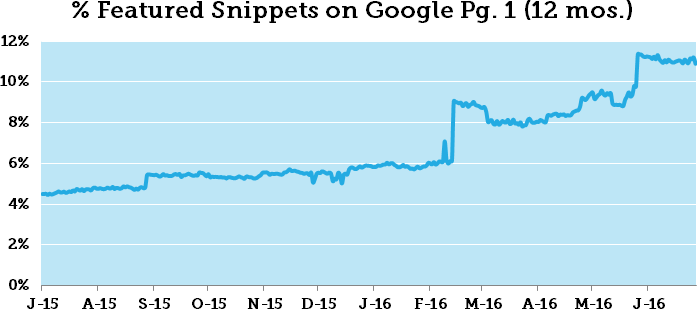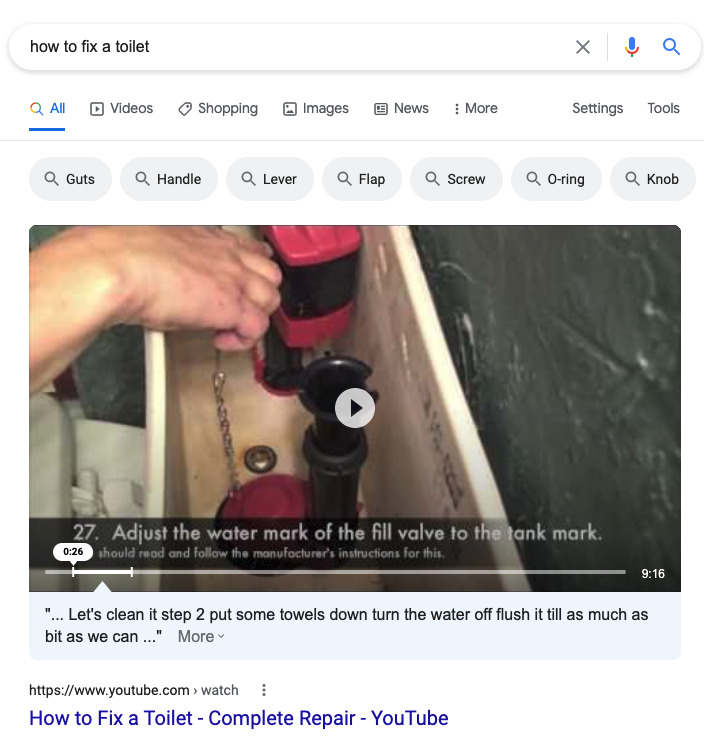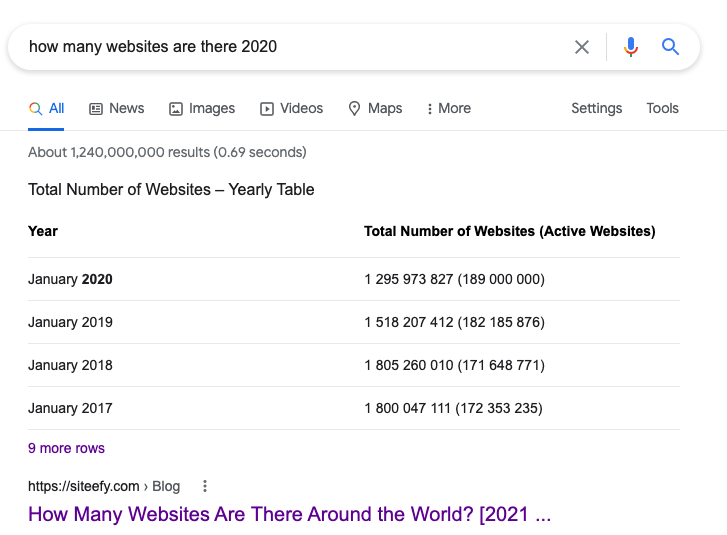In the fall of 2014, Google first introduced featured snippets to its Search Engine Results Pages (SERPs). Two years later, there are still only a handful of marketers taking full advantage of the opportunities this valuable real estate has to offer.
With the ever-increasing competition in the SERPs—Ads, Local Packs, images, video, and fewer organic places—it’s become even more important to maximize every opportunity to get a foothold in the SERPs.
A recent study by MOZ found that featured snippets were triggered by around 11% of the 10,000 keywords they tracked with more and more featured snippets appearing all the time.

What Are Featured Snippets?
Featured Snippets are answers boxes displayed by Google in the SERPs that provide an answer to a specific question or query by using a snippet of content from site along with a link to that particular page. Featured snippets can appear in a number of different types, the most prevalent being:
Lists
Tables
Paragraphs

YouTube Features

Carousels

Why Should You Want Featured Snippets?
What’s the highest possible organic position in which your site could rank? If you said #1, you’d be wrong! The featured snippet is often referred to as “Position #0,” as it appears above the regular organic results.
Not only does it rank higher than regular organic results, it is also surrounded by a bounding box, includes an image taken from the snippet’s target page, and has additional styling to make it stand out visually from the rest of the organic results. Websites that trigger featured snippets often benefit from increased visibility, which, in turn, can lead to an increased Click-Through Rate (CTR), driving more qualified traffic to your site.
A recent case study conducted by SEMrush highlighted a 500% increase in traffic for a site that triggered a featured snippet. Having your site link appear in a featured snippet can also result in an increase in perceived “authority.” With Google selecting your content to answer the question/query, it can appear as a validation of your site to customers.
Lastly, even for highly competitive organic terms, there may be an opportunity to overtake your major competition. You do not have to rank number one in the organic search results in order to appear in the featured snippet. In fact, you can rank anywhere in the Top 10 and still generate a featured snippet. Over 70% are triggered by sites outside of the top position!
When Should You Optimize for Featured Snippets?
Featured snippets are often generated by simple informational and commercial queries. More often than not, these queries are:
- Questions (who, what, where, why, when, how, does, is, etc.)
- Numerical (measurements, costs, salaries, etc.)
- Definitions (does, cause, define, etc.)
However, try to avoid targeting local, subjective, factual, and eCommerce terms, as these queries will either return a local pack result, a Google answer that doesn’t contain a link, or no answer box at all. Image and video queries are also an area that currently do not often trigger featured snippets.
Use tools such as Answer The Public to research questions and queries around key terms in your business area. You can also use Google, too. Start typing a question into the Google search bar and make a note of all of the relevant suggested queries it displays.
Also, Google often displays “People also ask” boxes and “Searches related to [query]” at the bottom of the page—another great place to discover what people are asking. Identify common questions and queries that your customers are searching for that fall into the categories above.
Use these questions and queries related to your business to identify if you already have. Then, uncover any featured snippets you are already triggering and those of your closest competitors to discover what opportunities are out there for you site to rank in position #0.
This Search Engine Land post describes how you can use paid tools (like SEMrush) and free tools (like Google Search Console) to discover if you or your competitors are triggering featured snippets and, if so, for what queries.
Align these opportunities with your business goals and prioritize them by order of importance and begin working on them right away. Start by taking your prioritized list of queries and begin formulating a content strategy—what you are going to write and when? Provide clear and direct answers to the questions while also adding value and demonstrating your expertise by going beyond the direct answer.
How Can You Trigger Featured Snippets?
Triggering featured snippets is simple.
- Identify the questions and queries customers are searching for that your business could answer.
- Answer those questions with specific and authoritative content.
- Provide added value by demonstrating your expertise on the topic in question.
- Structure your content using tables, lists, and images so that it’s easy for customers AND Google to find the answers they’re looking for.
- Last but not least, you must already be ranking in Google’s top 10 results for that specific question or query.
If your site is already ranking in the top 10 of Google search results for some of your target questions and queries, you can increase the amount of qualified traffic to your site by taking advantage of featured snippets.
Focus your efforts on creating engaging content that directly answers the questions that your customers are asking and answer them in a better, more authoritative way than your competitors. Include lists, tables, and images to structure your content in such a way that Google can easily find and display the answers using your content.





